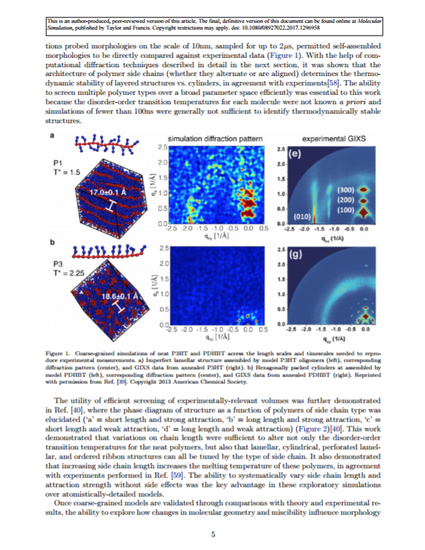
Rationally designing roll-to-roll printed organic photovoltaics requires a fundamental understanding of active layer morphologies optimized for charge separation and transport, and which ingredients can be used to self-assemble those morphologies. In this review article we discuss advances in three areas of computational modeling that provide insight into active layer morphology and the charge transport properties that result. We explain the computational bottlenecks prohibiting atomistically-detailed simulations of device-scale active layers and the coarse-graining and hardware acceleration strategies for overcoming them. We review coarse-grained simulations of organic photovoltaic active layers and show that high throughput simulations of experimentally-relevant length scales are now accessible. We describe a new Python package diffractometer that permits grazing-incidence X-ray scattering patterns of simulated active layers to be compared against experiments. We explain the accurate calculation of charge-carrier mobilities from coarse-grained active layer morphologies by using atomistic backmapping, quantum chemical calculations, and kinetic Monte Carlo simulations. We employ these simulations to show that ordering of poly(3-hexylthiophene-2,5-diyl) explains a factor of 1000 improvement in charge mobility. In concert, we present a suite of computational tools enabling large-scale electronic properties of organic photovoltaics to be studied and screened for by molecular simulations.
This is an Accepted Manuscript of an article published in Molecular Simulation, 2017, available online at: doi: 10.1080/08927022.2017.1296958
Available at: http://works.bepress.com/eric_jankowski/17/
